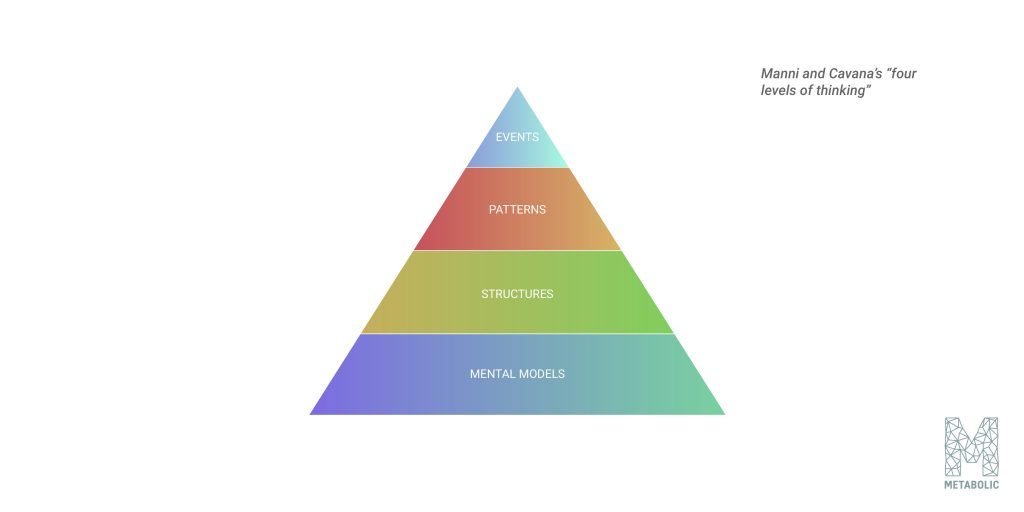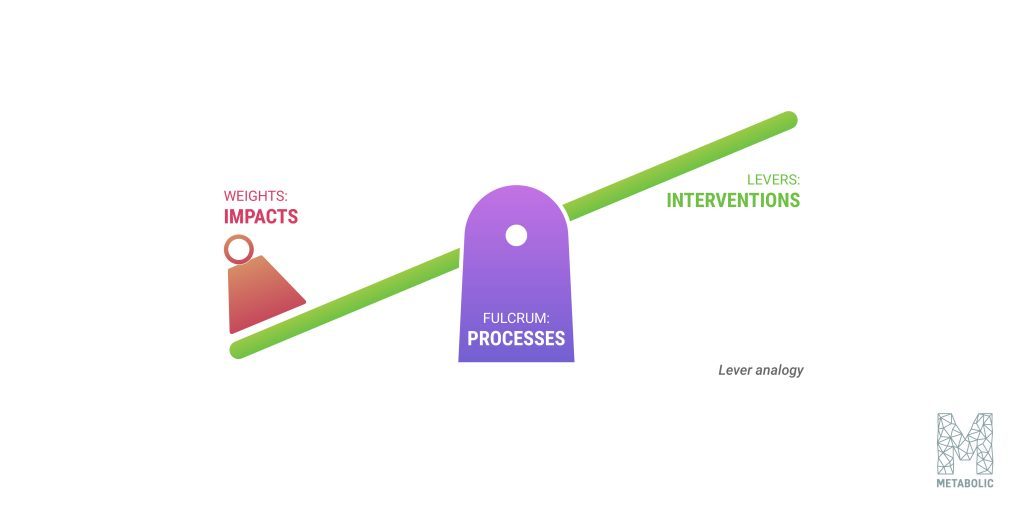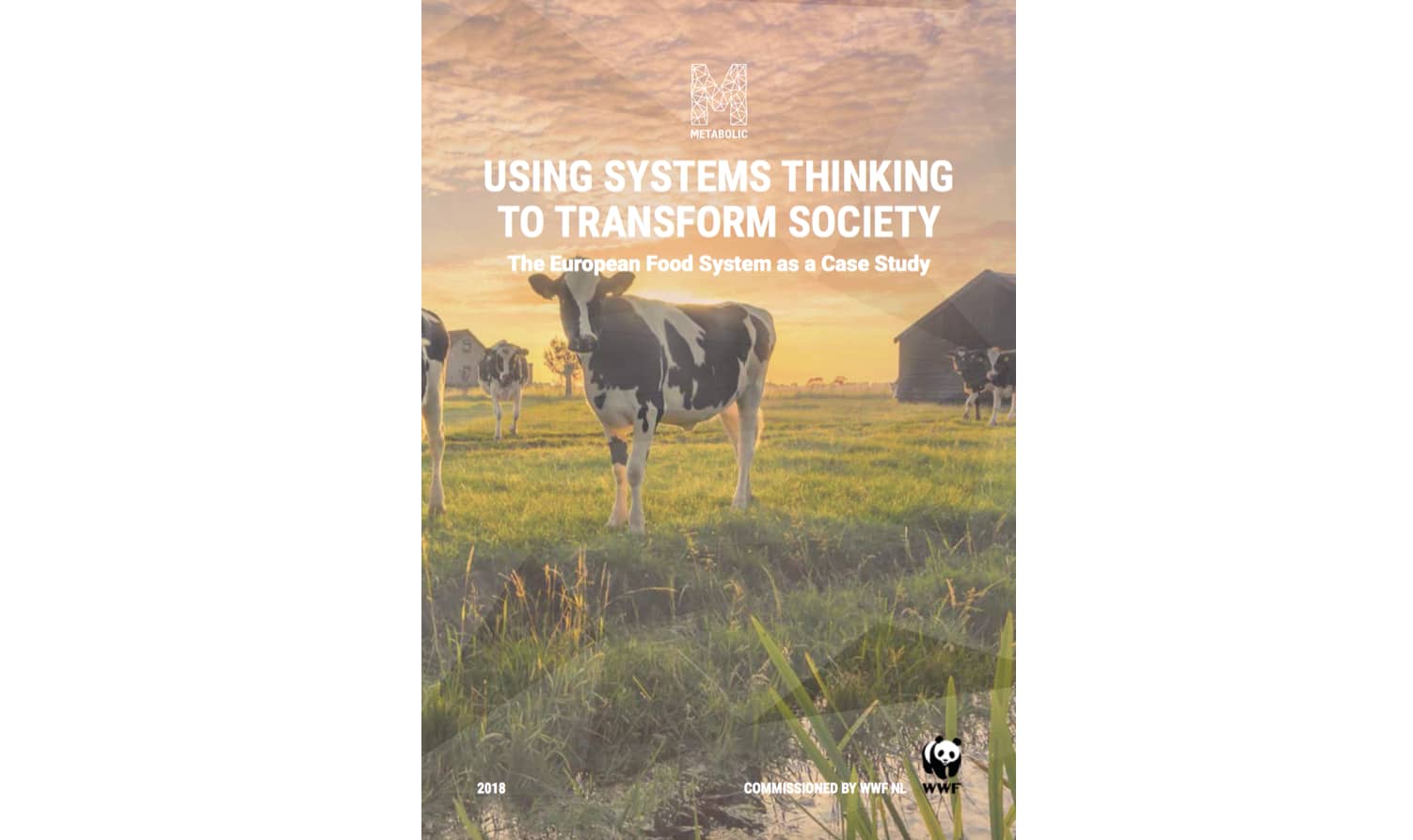The World Wildlife Fund (WWF) is known for its work with governments, the public and the business community to drive sustainability initiatives across the globe. To accelerate the transformational impact it aims to achieve, WWF Netherlands commissioned Metabolic to produce a guidebook on systems thinking: a powerful tool for finding leverage and creating strategies for change.
When working within complex systems, tackling environmental and humanitarian sustainability challenges requires a new approach. If we do not consider each challenge within its broader systemic context, attempts to fix these problems can prove ineffective or even lead to unintended and unforeseen consequences. Systems thinking is an effective way to approach complex systems, find leverage points, and avoid pitfalls.
To achieve its mission to stop the degradation of the planet’s natural environment and create a future where people live in harmony with nature, WWF recognizes the need for a systems thinking perspective. This means finding leverage points and addressing not only immediate drivers, but also root causes.
Building on previous work with WWF Netherlands and extensive experience in systems analysis, Metabolic has developed a practical resource for applied systems thinking. The guidebook Using Systems Thinking to Transform Society uses the case of the European food system – one of the continent’s largest drivers of biodiversity loss – to explain how to harness the system’s structures and behaviours to create change. It provides an introduction to systems thinking and a step-by-step guide to identifying leverage using systems analysis.
Systems theory
If we are to have any hope of changing a system for the better, we must first understand what causes it to function the way it does. Systems theory can help us do this by providing tools for understanding complex systems and helping us move beyond “end of pipe” solutions to address the deeper structures and mental models at the root of the problem.

As Manni and Cavana’s “four levels of thinking” model shows, the outcomes or impacts of a system are ultimately caused by its structure. Events represent only the “tip of the iceberg”. However, because they are most visible and immediate, attention is often directed here at the “end of the pipe,” and interventions are aimed only at addressing the symptoms of a problem rather than its root causes.
Finding leverage
Leverage points are places in a system where change in one element or process can have a systemic effect. Using the analogy of how a lever works, the systems thinking guidebook introduces three steps that can be used to identify the actions which will create the desired outcome.
The first step is identifying the weights or impacts in a system that we want to shift to a more sustainable state. We describe which types of impacts should be prioritized over others, including
- Long-term, irreversible impacts
- Impacts which undermine the ability of the earth to provide a safe operating space for humans
- Impacts for which the outcomes for people or environment have a high degree of uncertainty
The second step is to sketch a systems map, looking at the processes and system structures which lead to the impacts. The goal here is to identify the fulcrums, or processes, around which the system must shift to reduce impacts. We look specifically for processes which:
- Contribute to a large number of impacts across the system
- Lead to a disproportionately large part of a single impact
- Contribute to reinforcing feedback loops, which will perpetuate the problem unless interrupted
Finally, we must identify the lever, or the intervention, which will ultimately shift the impact. The systems thinking guidebook walks through real-world examples of how to prioritize efforts for change and a framework to score and rank interventions according to their leverage.

Erin Kennedy, consultant at Metabolic, said: “With the methods presented in this report, organizations and thought leaders can gain an understanding of how to formulate strategies and roadmaps using applied systems thinking. Based on our own multidisciplinary expertise, we have defined a simple process for identifying leverage and thinking systematically about creating effective strategies for change. We offer this guidebook as a means to explain our process, which can be applied by other groups of experts in different fields.”
To download the full report Using Systems Thinking to Transform Society: The European Food System as a Case Study, click here.
Metabolic has developed a suite of approaches that allows us to quickly map and understand how a system functions (whether that’s a city, society, or sector) and where we can intervene to make the biggest difference. We offer a Systems Thinking Masterclass for businesses, governments, and non-profits. To learn more about how we use systems thinking throughout our work, contact [email protected].






